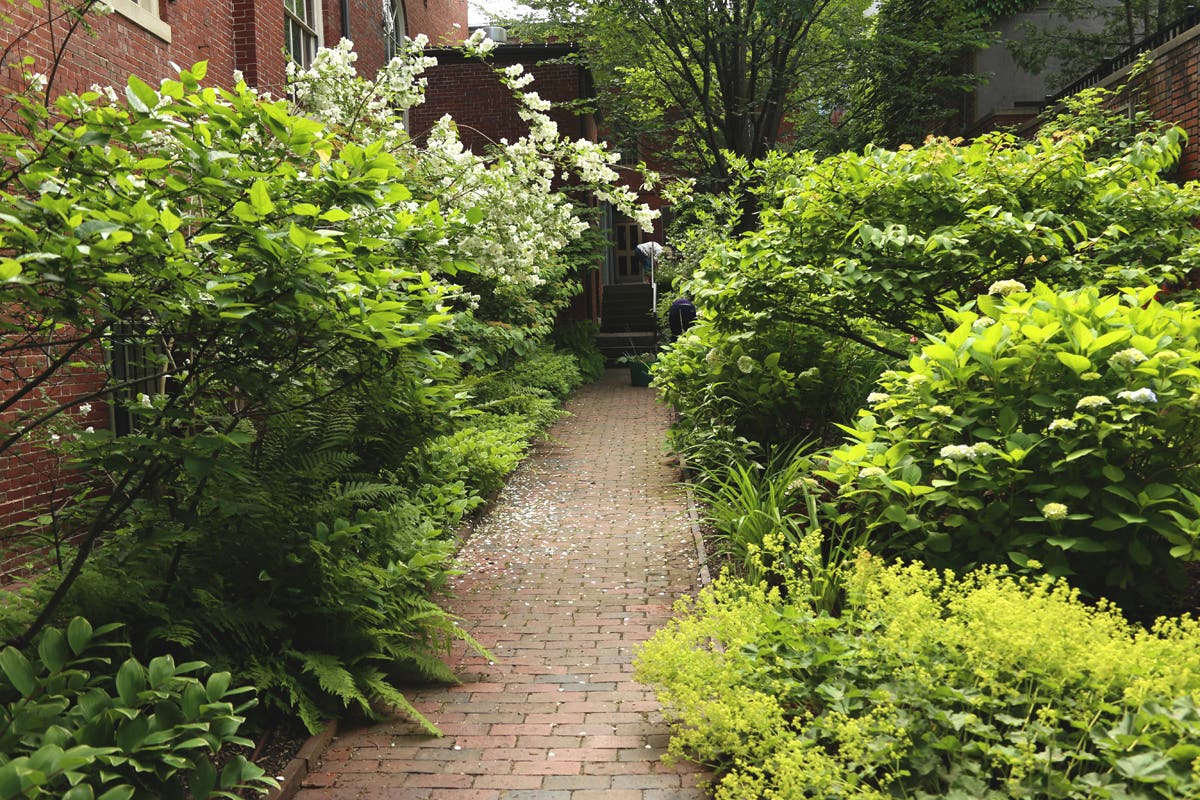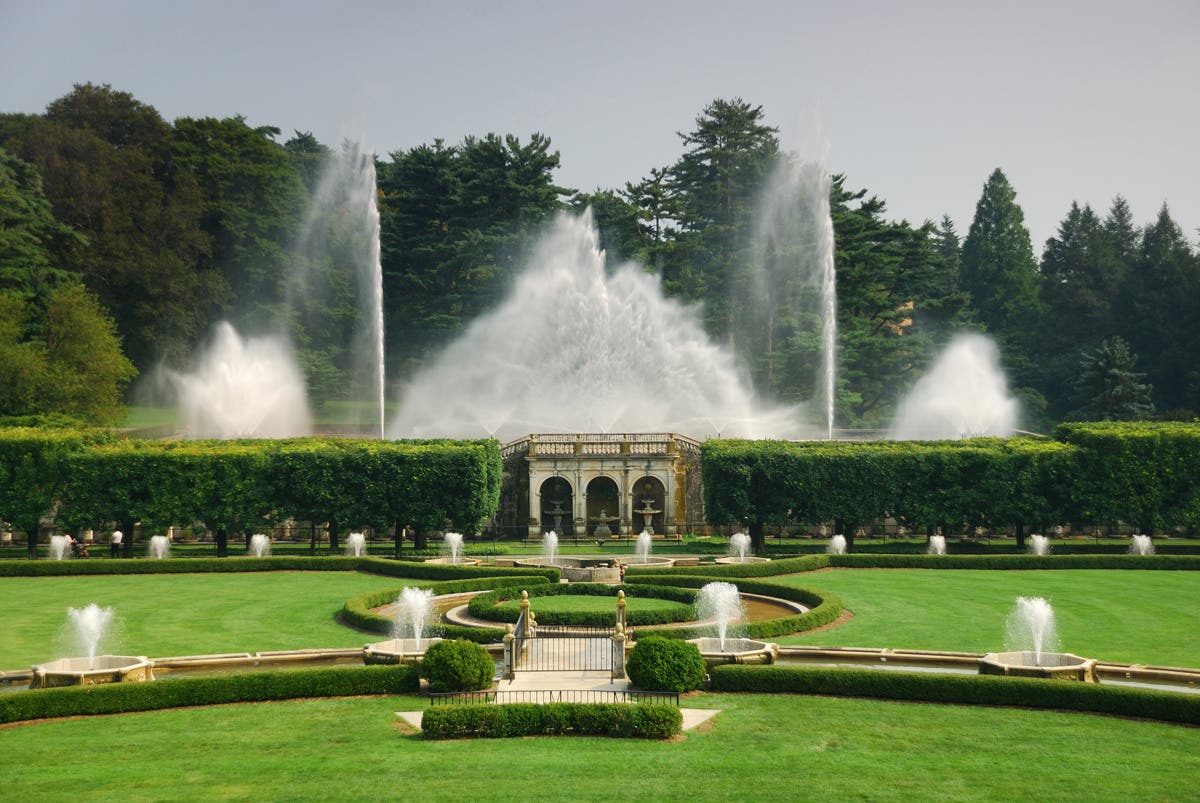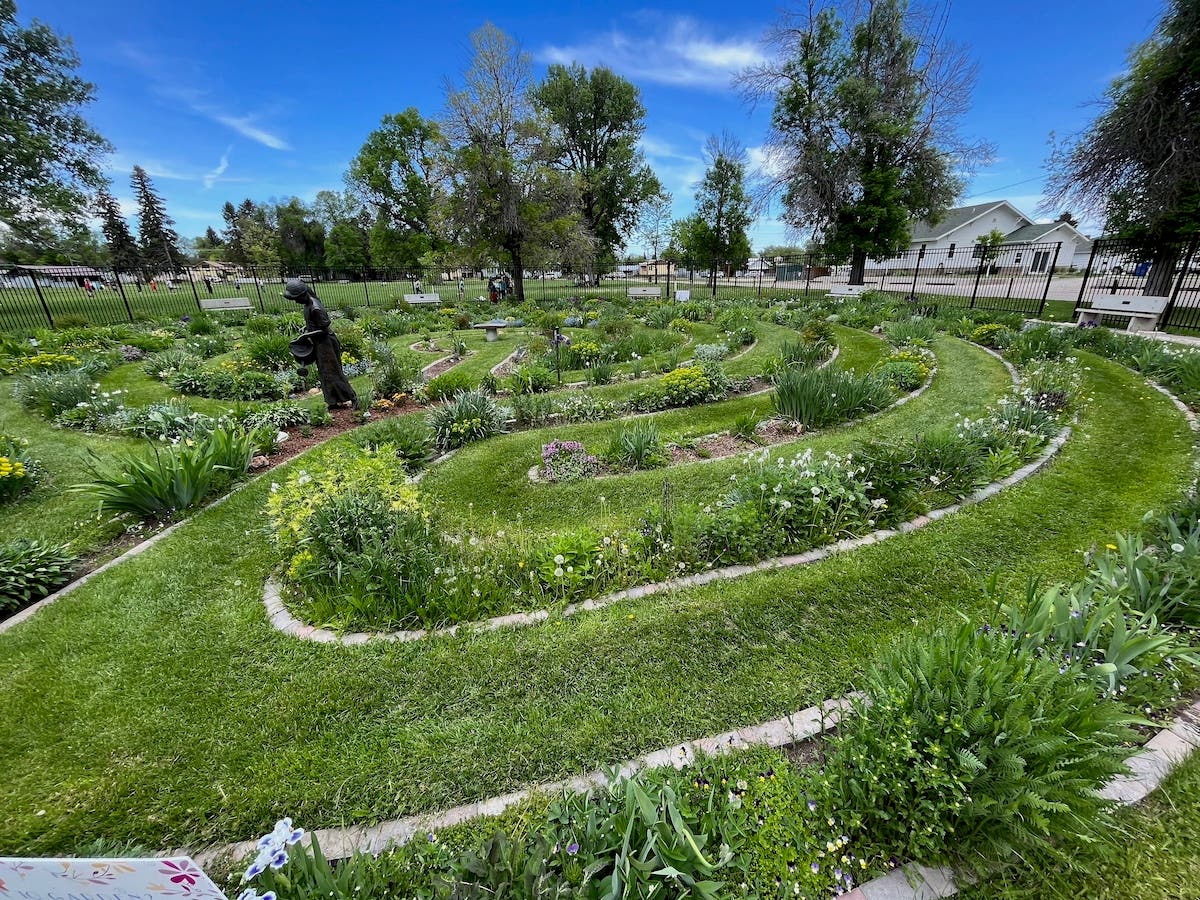The Idylls of Innisfree
It came within a heartbeat of being just another English garden. Walter and Marion Beck were well on their way to putting in something very traditional, European, and floral when they began work on their Millbrook, New York, property in the 1930s. Then the land spoke to them.
It came within a heartbeat of being just another English garden. Walter and Marion Beck were well on their way to putting in something very traditional, European, and floral when they began work on their Millbrook, New York, property in the 1930s. Then the land spoke to them. Well, a few Chinese landscape paintings spoke to them first, inspiring them to create a very different sort of garden, called Innisfree.
A balance
If ever there was a balanced collaboration between man and nature, it is manifest at Innisfree. Seemingly natural at first glance, Innisfree's scenes of rock, water, and naturalized perennials are specifically choreographed to appear as if nature was simply feeling particularly proud and creative that day. Yet there is often no sense of man's footsteps on the place. Of course, a whole lot of thought, care, and intervention was required to enhance, guide, and polish nature to the patina that seems so effortless in this landscape. The place is amply endowed with a surfeit of natural beauty, but you might never see the forest for the trees without the considerable prompting of the landscape's editors, which is all done behind the scenes. This deeply successful, long-term, and discrete relationship between man and nature is astounding. And rare. What's more, the garden has been under the care of several different stewards throughout its lifetime. Each strengthened the work of predecessors and added an equally expert layer.
History
From the beginning, the land was well endowed. Without a doubt, the place itself had considerable charm when Walter Beck married Marion, the daughter of an iron baron, in 1922. They decided to build their home on these 950 acres, which Marion already owned. The 40-acre Tyrrel Lake alone lends a natural splendor to the site. The Queen Anne–style house the Becks built—patterned after Wisley—inspired billowing English borders; at first, the Becks saw a landscape park as the obvious complement. Doubtless, it would have been a glorious English garden, given the Becks' resources and finely tuned sensibilities. It would have been perfectly lovely as far as it went.
Walter Beck was well on his way toward achieving the English ideal when he changed his mind. The garden was ripped out. At first he groped for what, exactly, he wanted in its place. He knew he didn't seek a typical solution. The Becks set off on a year-long study tour abroad to find the answer.
Chinese influence
In a library in London, Beck happened upon illustrations of Wang Wei's eighth-century garden, which sent him delving deeper into the Chinese discipline of landscape design. Although he had no intention of attempting a Chinese garden in upstate New York, he realized that the techniques alone might translate well. That's when he struck upon the "cup garden" mode—wherein scenes are created using the landscape as a framing device. In a nutshell, at Innisfree your eye is directed to a meditation on the magnificence of nature (see "The cup garden concept," below). Shaped from the natural landscape, framing makes the garden come alive, while giving it a timeless, seasonless quality. Each composition is equally effective from all approaches. Each scene is expressive on the large scale as well as intimately. Innisfree is a garden of details and grandeur. For the next 25 years, Beck worked on defining and honing such scenes surrounding his lake.
Friend and steward
Walter Beck didn't go it alone. Lester Collins, a prominent landscape architect who had studied throughout the world, including in China, met the Becks when he was a graduate student in 1938. A friendship was forged, and he began guiding Innisfree's development. When Walter Beck passed away in 1954, Marion turned to Collins to help steward Innisfree's future. Upon her death in 1959, Innisfree Foundation, Inc., a charitable and educational trust, was put into place and the garden was opened to the public. As the staff of 20 was gradually reduced to 5, the labor-intensive features that weren't conducive to public display—such as the moss steps that required one full-time employee and could only be tread once weekly—were phased out. Simultaneously, the incongruous house was removed. In 1972, a large portion of the original acreage was sold to an ecology institute, which keeps it in its natural state. The core 180 acres, where the cup gardens flourish, remain safely within Innisfree's borders.
Not that Collins's role was solely one of downsizing. Involved with the development of the property since its early years, he took an active role in furthering the garden. He aimed to weave all the separate cups together into a larger meaningful picture. He "perfected the panorama," as Oliver Collins, his son, puts it. "He stitched the scenes together." Lester Collins created a walkway around Tyrrel Lake, joining the circuit with a bridge that makes it more accessible to the public. Meanwhile, more of the land was incorporated into the sequence. He dredged part of the lake to reveal the hidden cliffs; he created an island from the muck and pollarded a trio of weeping willows as punctuation; he edited and emphasized the shoreline. Gravel roads were converted into manicured grass, without the sense that a mower ever rolled across the scene. A picnic area with seating appeared. All the steps of stewardship and more were taken to bring the landscape from past to future.
The rhythm didn't skip a beat after Collins died in 1993. His wife, Petronella, continued the long spate of stewardship. Throughout her husband's tenure, she selected plants to enhance his projects, and she continued to keep abreast of appropriate plants as they became available through the trade. Petronella was the mastermind behind the woody influx of Nyssa sylvatica, Stewartia pseudocamellia, and Parrotia persica, as well as numerous naturalized perennials. One of her proudest accomplishments was the major water feature she engineered to spray a plume of mist skyward and render visitors' first glimpse of the garden more dramatic, more heart-haltingly sublime.
An experience
Innisfree can be perceived on several levels. You can walk through the landscape and reach a deeper understanding of nature and its beauties. You can see the big picture and the minutiae. You can do the same within yourself—delve and discover, seek and see. Or you can just have a nice afternoon in the park. Whatever avenue you take, it's an experience to remember. If you go: Innisfree Garden, Tyrrel Road, Millbrook NY 12545. For full information see www.innisfreegarden.org or call 845-677-8000.







